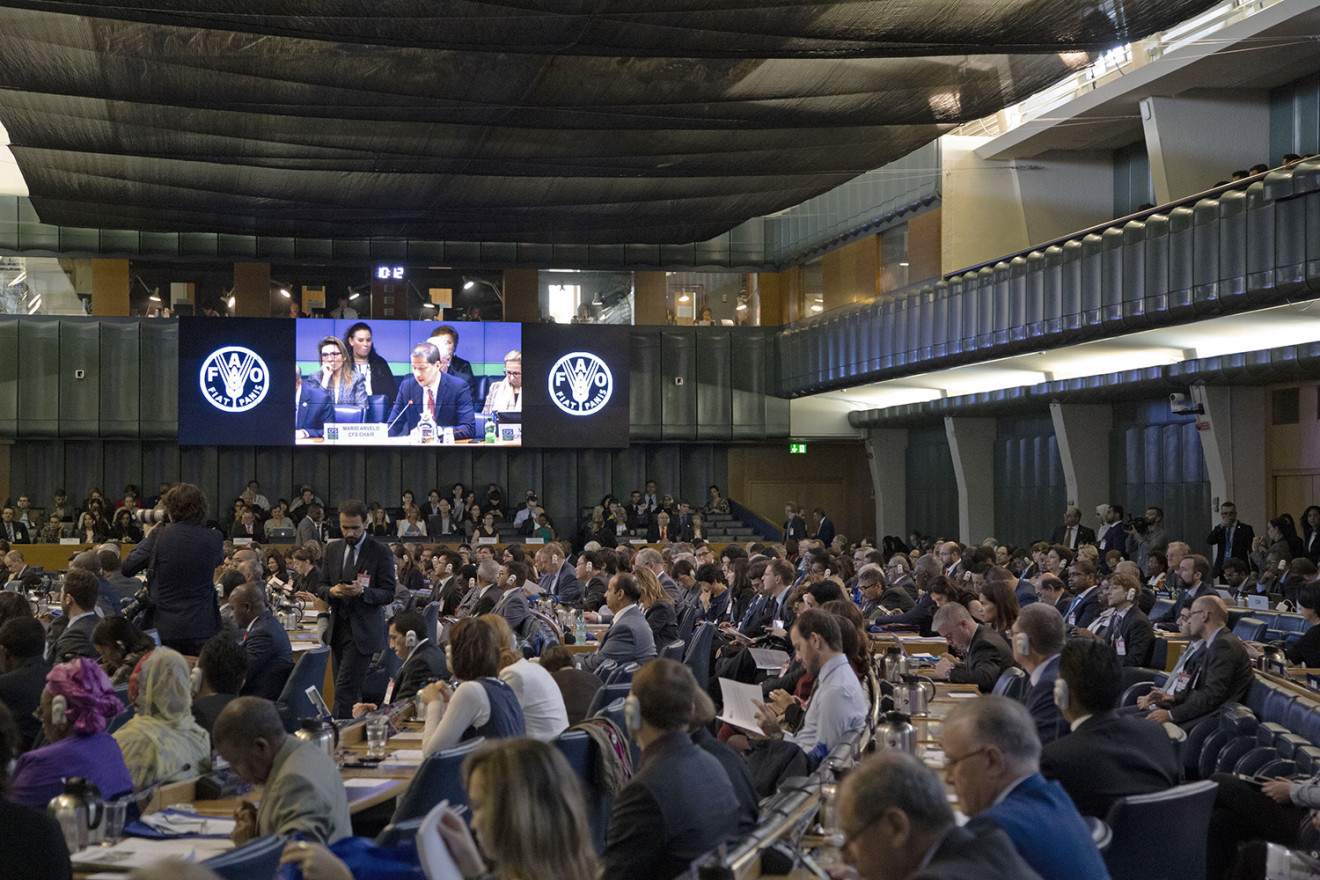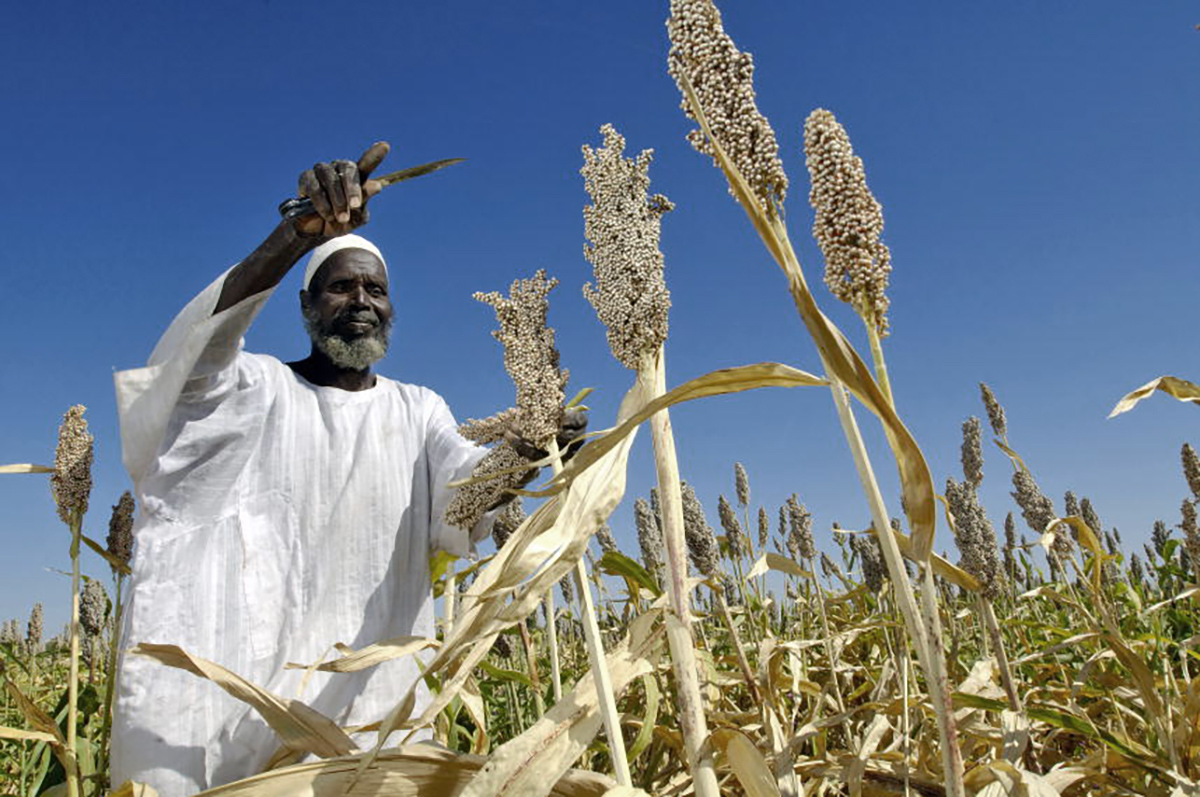
On screen, Mario Arvelo, Chair of the Committee on World Food Security, makes his opening statement at the Committee on World Food Security Conference in October 2018. (Planet Forward)

On screen, Mario Arvelo, Chair of the Committee on World Food Security, makes his opening statement at the Committee on World Food Security Conference in October 2018. (Planet Forward)
“2030 will be the most consequential turning point in history,” said Mario Arvelo, Chair of the Committee on World Food Security, as part of his opening statement at the Committee on World Food Security Conference, hosted by the Food and Agriculture Organization around World Food Day in October.
The UN had just released an alarming report, which warned that 12 years from now we will be beyond the tipping point — the point-of-no-return — when the global warming trend will be irreversible.
Global warming isn’t the only issue on the U.N.’s agenda. This year, delegates at the UN-FAO launched a mission to end world hunger by 2030. The U.N. estimates that more than 820 million people are hungry. That number has been increasing since 2014, despite the UN-FAO’s previous efforts to rid the world of hunger.
What are global leaders doing differently now to ensure that their end world hunger campaign works this time around?
One of their focuses is to build resilience. Several weeks before the UN-FAO’s annual World Food Day conference, the FAO partnered with the European Union on a €77 million (approximately $80 million) project to build global resilience to food crises.
A community is considered to be in a food crisis when at least one in five households have high malnutrition, even with humanitarian aid, according to the Famine Early Warning Systems Network.
“Investing in resilience is key to fighting hunger today and in the future. In view of the magnitude and persistence of food crises,” José Graziano da Silva, head of the FAO, said in a press release. “We need to invest more in resilience interventions and create stronger alliances with all parties.”

Food crises are caused by conflict, drought, flood, disease, and unstable food prices, the UN-FAO reports. In 2017, a total of 51 countries were affected by food crises, according to an FAO report. The same reported estimated that 125 million people are food insecure as a result of food crises. These individuals equal 15% of the global hungry population.
Günther Hemrich, deputy director of the FAO’s Nutrition and Food Systems Division, lived in Mwingi, Kenya—a town tormented with food crises—for three years.
Hemrich said that the first crop season he witnessed in Mwingi was a failure. The village survived off of humanitarian aid, which was mostly corn. The second season also failed. Corn for dinner again. Then so did the third. And the fourth. So, more corn was delivered to Mwingi.
Finally, the fifth season prospered. The rainy season allowed the crops to thrive, but it also triggered a devastating cholera outbreak.
Disease is among the top causes of food crises, the UN reports. Hundreds of village members were affected. Those who were healthy enough would carry their neighbors to health centers in wheelbarrows, Hemrich said.
Although Kenya faces food crises, it is not a country that will receive aid from the FAO and EU’s 3-year-long project. The food resilience project will focus on 12 countries: Yemen, Cuba, Venezuela, Myanmar, Madagascar, Ethiopia, Somalia, Sudan, Niger, Chad, Mali, and Nigeria.
Yemen was the most hunger-stricken country on the globe last year with more than half of the population—about 17 million people—considered food insecure as a result of conflict, displacement and economic collapse.
Other countries on the list, such as Ethiopia and Madagascar, have been affected by extreme weather. Ethiopia is still facing the effects of the El Nińo drought and Madagascar has been impacted by cyclones.
It is not yet clear what these projects will entail or how they will build resilience, but leaders agree that the effort is necessary.
With a growing global population — which is projected to hit 10 billion by 2050 — and the effects of climate change, UN leaders feel the pressure to enact monumental change.
“Either we carry on doing the same thing, which is not getting us any closer to zero hunger, or we do things differently,” Arvelo said.
—
Editor’s note: This series, A Zero Hunger Future, is generously sponsored by the UN-FAO. All editorial content is created independently. To discover more experiential learning opportunities, email editor@planetforward.org.